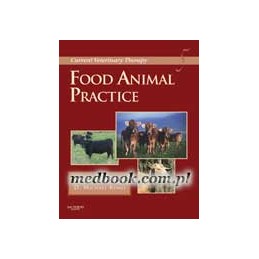Description
Written by leading food animal researchers, practitioners, and educators, this comprehensive guide provides quick access to the latest medical and surgical interventions for cattle, sheep, and goats. The concise, quick-reference format and logical body systems organization make it ideal for use in both the clinical setting and the field. Youll easily locate key information on preventing, treating, and managing disease in food animals, as well as expert insights on improving outcomes for individual animals and herd populations.
Product Details
Reference
31839
EAN13
9781416035916
ISBN
9781416035916
Data sheet
Publication date
2008
Issue number
5
Cover
hard cover
Pages count
736
Dimensions (mm)
216 x 276
Weight (g)
1640
SECTION 1: DIGESTIVE SYSTEM SECTION 2: METABOLIC SYSTEM SECTION 3: RESPIRATORY SYSTEM SECTION 4: CARDIOVASCULAR SYSTEM SECTION 5: MUSCULOSKELETAL SYSTEM SECTION 6: NEUROLOGICAL SYSTEM SECTION 7: URINARY SYSTEM SECTION 8: GENITAL SURGERY - MALE SECTION 9: GENITAL SURGERY - FEMALE SECTION 10: OPHTHALMOLOGY SECTION 11: PHARMACOLOGY AND THERAPEUTICS SECTION 12: CHEMICAL RESTRAINT, GENERAL ANESTHESIA, AND PAIN MANAGEMENT SECTION 13: COW-CALF/SMALL RUMINANT PRODUCTION MEDICINE SECTION 14: FEEDLOT PRODUCTION MEDICINE




 Delivery policy
Delivery policy
 Security policy
Security policy
 Return policy
Return policy
